Topic headache types: Explore the world of headache types to better understand, manage, and find relief from your pain. This comprehensive guide offers insights into causes, symptoms, and treatment options for a life with fewer headaches.
Table of Content
- What are the different types of headaches?
- Understanding Migraines: Symptoms, Triggers, and Treatments
- Tension Type Headaches: Causes, Symptoms, and Management Strategies
- Cluster Headaches: Characteristics, Causes, and Treatment Options
- Secondary Headaches: Identifying Underlying Conditions
- Pediatric Headaches: Recognizing and Treating Headaches in Children
- Diagnosis Techniques: From Clinical Evaluations to Advanced Imaging
- YOUTUBE: Types of Headaches: Primary vs. Secondary - Migraine, Cluster, Tension
- Latest Treatments: Medications, Therapies, and Lifestyle Adjustments
- Preventive Measures: Tips to Reduce Frequency and Severity
- When to Seek Medical Help: Red Flags and Emergency Symptoms
- FAQs: Expert Answers to Common Questions About Headaches
What are the different types of headaches?
There are several different types of headaches that people can experience. Some of the most common types include:
- Tension headache - This is the most common type of headache and is typically characterized by a dull, aching pain that feels like a tight band around the head.
- Migraine headache - Migraines are intense headaches that can cause severe pain, often accompanied by other symptoms such as nausea, vomiting, and sensitivity to light and sound.
- Cluster headache - Cluster headaches are extremely painful and tend to occur in cyclical patterns or clusters. They are often described as a sharp, stabbing pain around one eye or temple.
- Hemicrania continua - This is a type of persistent headache that is usually located on one side of the head and has a continuous, moderate intensity.
- Ice pick headache - Ice pick headaches are characterized by sudden, severe, and stabbing pain that lasts for a brief period, usually seconds or minutes.
- Thunderclap headache - Thunderclap headaches are intense headaches that reach their peak severity within seconds or minutes. They are often a sign of a serious underlying condition and require immediate medical attention.
It\'s important to note that there are many other types of headaches as well, including sinus headaches, hormone headaches, exertional headaches, and more. If you frequently experience headaches or have concerns about your headache symptoms, it\'s best to consult with a medical professional for a proper diagnosis and appropriate treatment.
READ MORE:
Understanding Migraines: Symptoms, Triggers, and Treatments
Migraines are a type of headache characterized by intense, throbbing pain, often accompanied by nausea, vomiting, and sensitivity to light and sound. Understanding the symptoms, triggers, and available treatments is crucial for managing this debilitating condition.
- Symptoms: Migraines typically present with one-sided pain, pulsating in nature, and can significantly impair daily activities. Aura symptoms, such as visual disturbances or tingling, may precede the headache in some cases.
- Triggers: Various factors can trigger migraines, including stress, hormonal changes, certain foods and beverages, weather changes, and sensory stimuli. Identifying and avoiding personal triggers can help prevent attacks.
- Treatments: Treatment options vary and can include medication, lifestyle adjustments, and alternative therapies. Over-the-counter pain relievers, prescription triptans, and preventive medications are commonly used, alongside stress management techniques and dietary modifications.
Seeking professional medical advice is essential for tailoring a treatment plan to your specific needs. With proper management, individuals can reduce the frequency and severity of migraine attacks, improving quality of life.

Tension Type Headaches: Causes, Symptoms, and Management Strategies
Tension type headaches (TTH) are the most common form of headache, characterized by a dull, aching pain that often feels like a tight band around the forehead. Understanding the causes, recognizing the symptoms, and implementing effective management strategies are essential steps towards relief.
- Causes: TTH can be triggered by stress, muscle strain, and poor posture. Other contributing factors include lack of sleep, dehydration, eye strain, and caffeine withdrawal.
- Symptoms: Symptoms include constant, bilateral pain that"s not pulsating, tightness around the forehead or back of the head and neck, and possible sensitivity to light and noise. Unlike migraines, nausea and visual disturbances are rare.
- Management Strategies:
- Stress Management: Engaging in relaxation techniques, such as deep breathing, yoga, or meditation, can help reduce stress levels and the frequency of headaches.
- Physical Therapy: Exercises and stretches designed to improve posture and reduce muscle tension can be effective in managing TTH.
- Medication: Over-the-counter pain relievers, such as ibuprofen or acetaminophen, are often used to manage symptoms. However, their overuse can lead to medication-overuse headaches.
- Lifestyle Adjustments: Ensuring adequate hydration, regular physical activity, and sufficient sleep can help prevent TTH.
Seeking advice from a healthcare provider is recommended for persistent or severe headaches to rule out other causes and to develop a comprehensive treatment plan tailored to your specific needs.
Cluster Headaches: Characteristics, Causes, and Treatment Options
Cluster headaches are known for their extreme pain and occur in cyclical patterns or clusters. This section delves into their key characteristics, potential causes, and the various treatment options available to those affected.
- Characteristics: The pain from a cluster headache is intense, with a burning or piercing quality behind or around one eye. It can be throbbing or constant, often causing redness or watering of the eye, nasal congestion, and restlessness.
- Causes: While the exact cause is unknown, cluster headaches are believed to be related to the body"s sudden release of histamine or serotonin. Factors like alcohol, cigarettes, high altitudes, bright light, exertion, heat, and foods high in nitrites might trigger them.
- Treatment Options:
- Acute treatments aim to reduce the pain during an attack and include oxygen therapy, triptans (such as sumatriptan), and local anesthetics.
- Preventive treatments, which aim to reduce the frequency and severity of the headaches, may involve the use of medications such as verapamil, lithium, or corticosteroids.
- Lifestyle adjustments and avoiding known triggers can also help manage the condition.
- Invasive therapies, such as nerve blocks or deep brain stimulation, are considered when conventional treatments fail.
It"s important for individuals suffering from cluster headaches to seek professional medical advice to develop a treatment plan that addresses their specific needs and symptoms.
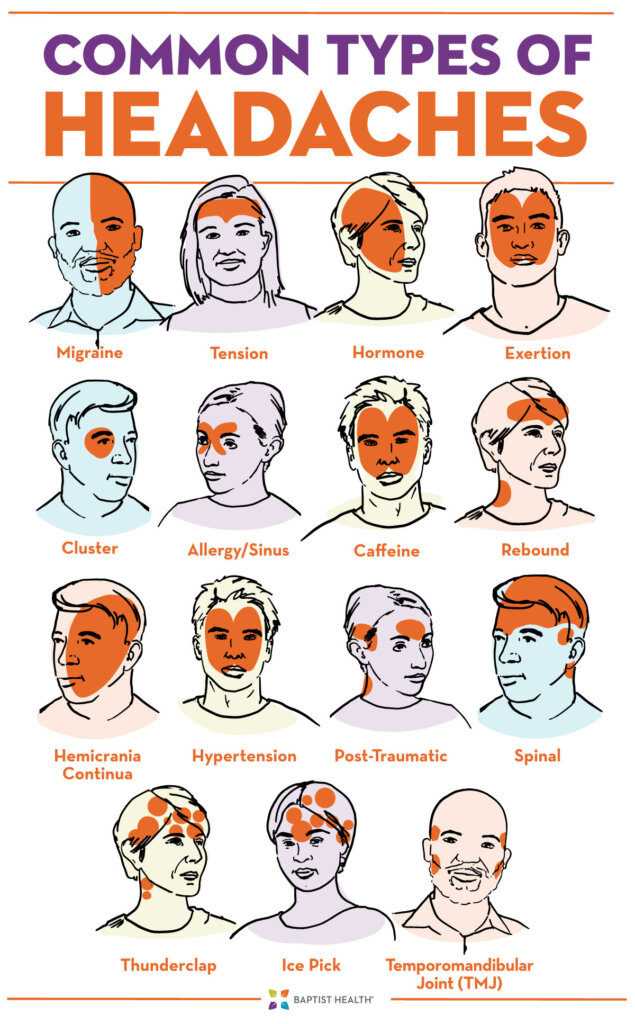
Secondary Headaches: Identifying Underlying Conditions
Secondary headaches are caused by underlying medical conditions that can range from non-threatening to life-threatening. Identifying and treating these conditions is crucial for relief and health. This section explores common causes and guidance for seeking help.
- Common Causes: Secondary headaches can arise from a variety of issues including sinus infections, brain tumors, blood vessel irregularities in the brain, neck injuries, high blood pressure, and medication overuse.
- Symptoms to Watch For: Unlike primary headaches, secondary headaches may present with additional symptoms such as fever, night sweats, sudden onset or a significant change in headache pattern, neurological deficits, or severe high blood pressure.
- Diagnostic Approaches:
- Medical History and Physical Examination: A thorough assessment by a healthcare provider is the first step.
- Imaging Tests: CT scans or MRIs can help identify structural causes.
- Lumbar Puncture: In cases where infection or bleeding is suspected.
- Treatment Options: Treatment depends on the underlying condition. It may include medication to treat infections, surgery to remove obstructions or tumors, or managing chronic conditions like hypertension.
Early diagnosis and treatment of the condition causing secondary headaches are vital. If you experience symptoms that are unusual, severe, or persistent, consult a healthcare provider promptly.
Pediatric Headaches: Recognizing and Treating Headaches in Children
Headaches in children can be challenging to recognize and treat due to varying symptoms and causes. Understanding the signs and appropriate treatments can significantly improve the quality of life for children experiencing headaches.
- Common Types of Headaches in Children: Migraines and tension-type headaches are most common in children, with symptoms like throbbing pain, nausea, and sensitivity to light or sound for migraines; and dull, pressing pain for tension headaches.
- Recognizing Symptoms: Children may exhibit headache symptoms differently, such as unexplained irritability, changes in sleep patterns, or avoidance of bright lights and loud noises. Younger children may have difficulty expressing their pain, making observation crucial.
- Triggers and Prevention: Common triggers include dehydration, lack of sleep, stress, skipped meals, and excessive screen time. Encouraging regular hydration, a consistent sleep schedule, healthy eating habits, and limited screen time can help prevent headaches.
- Treatment Options:
- Medication: Over-the-counter pain relievers like acetaminophen or ibuprofen can be effective, but always consult a pediatrician for the appropriate dosage.
- Lifestyle Changes: Regular physical activity, relaxation techniques, and a headache diary to identify and avoid triggers can be beneficial.
- Professional Care: For frequent or severe headaches, consultation with a pediatric neurologist may be necessary to explore further treatment options, including prescription medication or therapy.
Early recognition and appropriate management of headaches in children can lead to better outcomes and less disruption to daily activities. If headaches persist or interfere with your child"s life, seeking professional medical advice is essential.
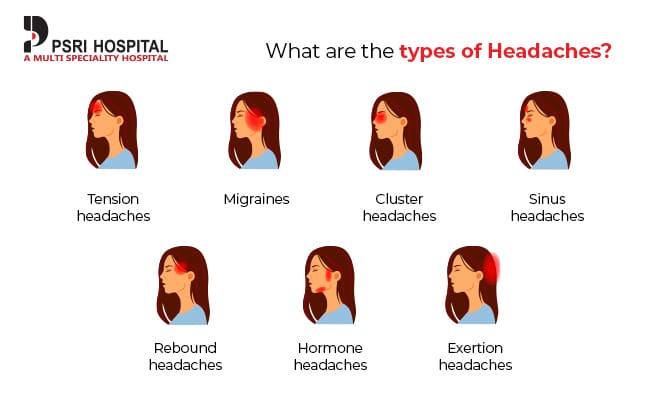
Diagnosis Techniques: From Clinical Evaluations to Advanced Imaging
Accurately diagnosing the type of headache is crucial for effective treatment. A variety of techniques from clinical evaluations to advanced imaging are employed to achieve this goal.
- Clinical Evaluation: Initially, a detailed medical history and physical examination are conducted. This includes discussing symptoms, headache patterns, triggers, and any family history of headaches.
- Neurological Examination: A neurological assessment helps to rule out or identify any underlying disorders that may be causing the headaches. This might involve testing reflexes, muscle strength, sensory perception, and coordination.
- Imaging Tests:
- Magnetic Resonance Imaging (MRI): An MRI can provide detailed images of the brain and blood vessels, helping to identify brain tumors, strokes, bleeding, infections, or other neurological conditions.
- Computed Tomography (CT) Scan: A CT scan can quickly help detect hemorrhages, tumors, strokes, and other disorders, especially in emergency situations.
- Other Diagnostic Tests:
- Lumbar Puncture (Spinal Tap): This procedure involves collecting and examining the cerebrospinal fluid to diagnose or rule out conditions such as infections or bleeding around the brain.
- Blood Tests: Blood testing can help identify infections, toxic substances, or other conditions that might be contributing to the headaches.
These diagnostic techniques help healthcare professionals make accurate headache diagnoses and tailor treatment plans that address the specific type and cause of headache, ensuring the best possible outcomes for patients.
Types of Headaches: Primary vs. Secondary - Migraine, Cluster, Tension
Are you tired of constantly dealing with annoying headaches? Discover the different types of headaches and their unique symptoms in this informative video. Gain valuable insights on how to manage and prevent them, so you can finally enjoy a headache-free life!
Tension Headaches: Triggers, Risk Factors, Signs & Symptoms, Types, Diagnosis, Treatment
Experiencing frequent tension headaches? This video is a must-watch for you! Learn about the causes, triggers, and effective ways to alleviate tension headaches. Say goodbye to the discomfort and hello to a calmer, more relaxed you!
Latest Treatments: Medications, Therapies, and Lifestyle Adjustments
The landscape of headache treatment is constantly evolving, with new medications, therapies, and lifestyle adjustments offering hope to those suffering. Here, we explore the latest in managing headache disorders.
- New Medications: Recent years have seen the introduction of CGRP (calcitonin gene-related peptide) antagonists, specifically designed to prevent migraines by targeting a pathway believed to play a critical role in these headaches.
- Advancements in Therapies: Neuromodulation techniques, such as transcranial magnetic stimulation (TMS) and vagus nerve stimulation (VNS), are emerging as effective treatments for certain types of headaches, offering relief without the side effects associated with medications.
- Lifestyle Adjustments: Increasing evidence supports the role of lifestyle changes in managing headaches. This includes regular physical exercise, stress management practices like meditation or yoga, maintaining a consistent sleep schedule, and dietary modifications to avoid known triggers.
- Biofeedback and Physical Therapy: These non-pharmacological treatments help patients control physiological processes related to stress and pain, and improve posture and muscular tension, respectively.
- Preventive Measures: For those with frequent or chronic headaches, preventive medications, including beta-blockers, anticonvulsants, and antidepressants, can reduce the frequency and severity of headaches when taken regularly.
While these treatments represent a leap forward in headache management, working closely with a healthcare provider to tailor a treatment plan to your specific needs is essential for the best outcomes.

Preventive Measures: Tips to Reduce Frequency and Severity
Implementing effective preventive measures can significantly reduce the frequency and severity of headaches. These strategies encompass lifestyle adjustments, dietary considerations, and stress management techniques.
- Maintain a Regular Sleep Schedule: Consistency in your sleep patterns can help prevent headaches. Aim for 7-9 hours of quality sleep per night and try to go to bed and wake up at the same times every day.
- Stay Hydrated: Dehydration can trigger headaches. Drinking enough water throughout the day is a simple yet effective way to reduce the likelihood of headache occurrences.
- Manage Stress: High levels of stress are a common trigger for many types of headaches. Techniques such as yoga, meditation, deep-breathing exercises, and regular physical activity can help manage stress levels.
- Limit Dietary Triggers: Certain foods and substances, including caffeine, alcohol, aged cheeses, and processed foods, can trigger headaches in some people. Keeping a food diary can help identify and avoid these triggers.
- Regular Exercise: Physical activity can reduce the frequency and severity of headaches by relieving tension and stress. Aim for at least 30 minutes of moderate exercise most days of the week.
- Adopt Good Posture: Poor posture can contribute to tension headaches. Work on strengthening and stretching your back, neck, and shoulders to improve posture and reduce headache risk.
By incorporating these preventive measures into your daily routine, you can not only reduce the frequency and severity of headaches but also enhance your overall well-being. Consult with a healthcare provider for personalized advice and treatment options.
When to Seek Medical Help: Red Flags and Emergency Symptoms
While most headaches are not indicative of a serious underlying condition, certain "red flags" or emergency symptoms warrant immediate medical attention. Recognizing these signs is crucial for prompt and appropriate care.
- Sudden, Severe Onset: A headache that comes on suddenly and is severe in intensity, often described as a "thunderclap" headache, can be a sign of a serious condition, such as an aneurysm.
- Progressive Symptoms: Headaches that progressively worsen or change in pattern over days or weeks need evaluation to rule out conditions like tumors or hydrocephalus.
- Neurological Symptoms: Headaches accompanied by confusion, seizures, double vision, weakness, or numbness in any part of the body could indicate a stroke or other neurological disorders.
- After Head Injury: Headaches following a head injury, especially if they worsen or are accompanied by symptoms like drowsiness or vomiting, may indicate a concussion or hematoma.
- Fever and Stiff Neck: A headache in combination with a fever and a stiff neck could suggest meningitis, a potentially life-threatening infection.
- Age Factor: New onset of headaches in individuals over 50 years of age can sometimes indicate arteritis, a condition that requires immediate treatment to prevent vision loss.
If you or someone you know experiences any of these symptoms, it"s important to seek medical attention immediately. Early diagnosis and treatment are key to managing these conditions effectively.

READ MORE:
FAQs: Expert Answers to Common Questions About Headaches
- What are the main types of headaches?
- There are several types of headaches, but the most common include tension-type headaches, migraines, cluster headaches, and secondary headaches that result from another medical condition.
- What triggers headaches?
- Common triggers include stress, lack of sleep, dehydration, dietary factors, changes in weather, hormonal changes, and certain medications.
- How can I tell if my headache is serious?
- Seek medical attention if you experience a sudden, severe headache, a headache with a fever, stiff neck, rash, confusion, seizures, double vision, weakness, numbness, or trouble speaking, or a headache after a head injury.
- Can lifestyle changes reduce headaches?
- Yes, lifestyle changes such as regular physical activity, maintaining a regular sleep schedule, staying hydrated, managing stress, and avoiding known triggers can help reduce the frequency and severity of headaches.
- When should I see a doctor for my headaches?
- If your headaches are frequent, severe, or disrupting your life; if over-the-counter medications don"t provide relief; or if your headaches are getting progressively worse, it"s important to consult a healthcare provider.
- Are there effective treatments for headaches?
- Yes, there are many effective treatments for headaches, including over-the-counter and prescription medications, lifestyle adjustments, and alternative therapies. The best treatment depends on the type of headache, its frequency, and severity, as well as individual patient factors.
Understanding headache types enriches your ability to manage and alleviate them effectively. Embrace these insights and strategies to navigate your way towards a life with less pain and more joy. Remember, knowledge is the key to unlocking a healthier, headache-free future.
:max_bytes(150000):strip_icc()/Health-dehydration-symptoms-7480908-Horiz-e2500f0828b746ee9d2e2b5257af60cb.jpg)
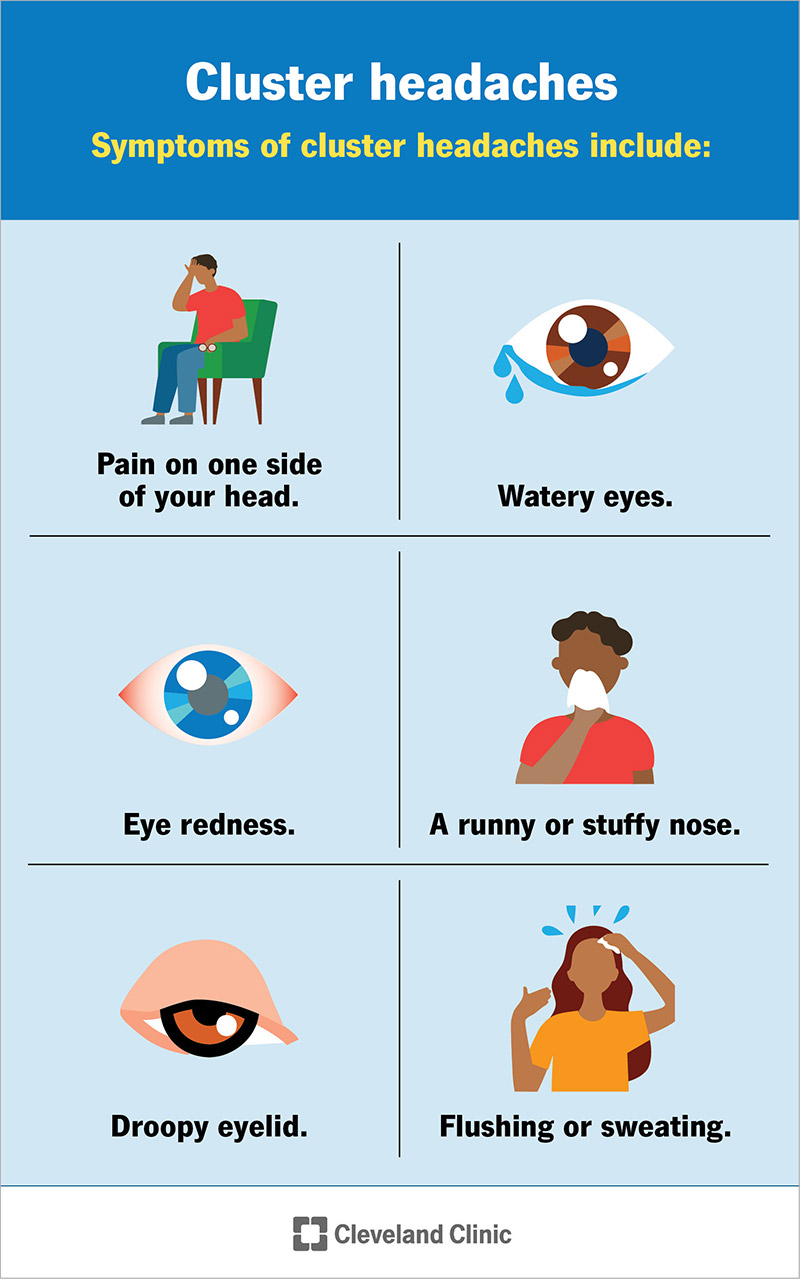
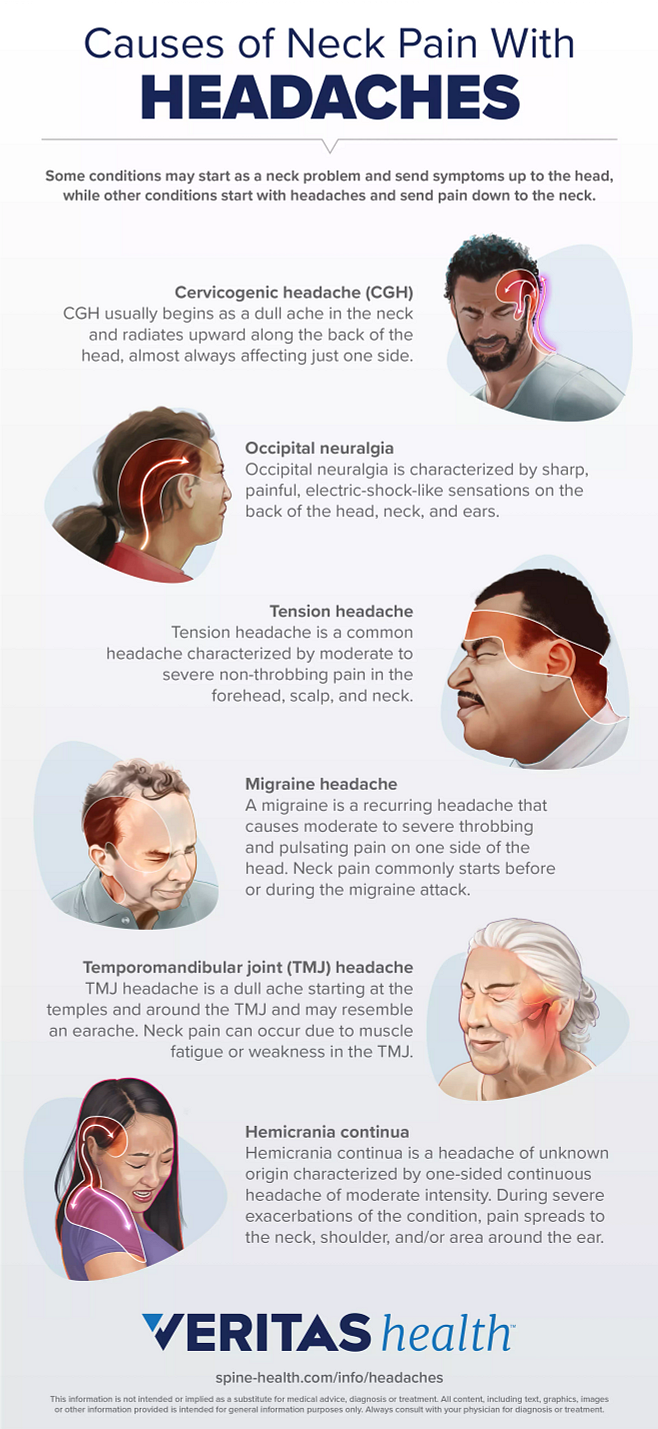
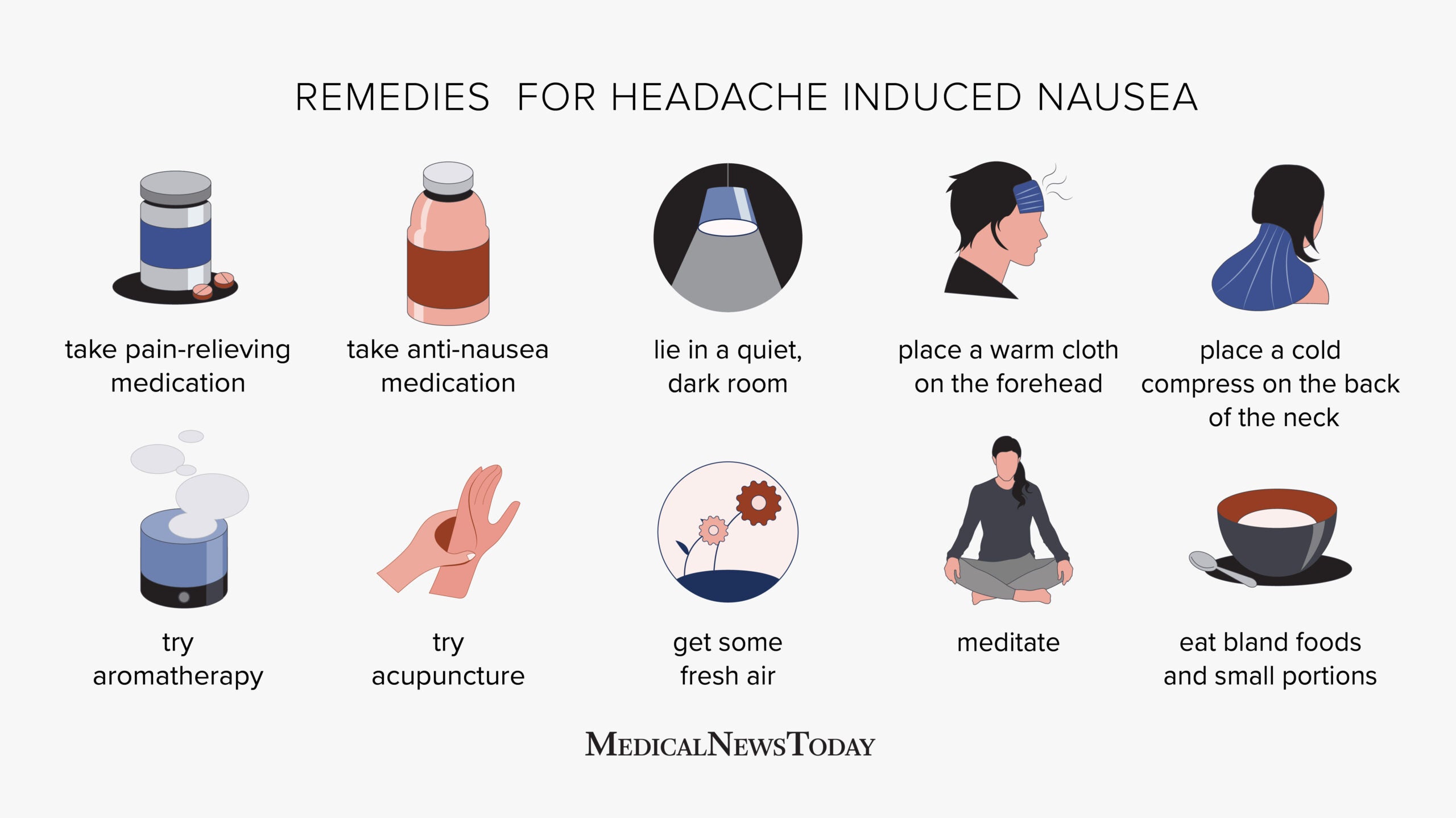
:max_bytes(150000):strip_icc()/headache-on-the-right-side-5216756_final-b9d0145864d74706b0316a2e9b62dd37.jpg)
:max_bytes(150000):strip_icc()/vision-and-headache-3422017_final-f90b31917b244236a7424b143a537fd3.jpg)
:max_bytes(150000):strip_icc()/migraine-relief-pressure-points-5205811-FINAL-cdc9e0d051cb460bac8baa98bc01954f.jpg)

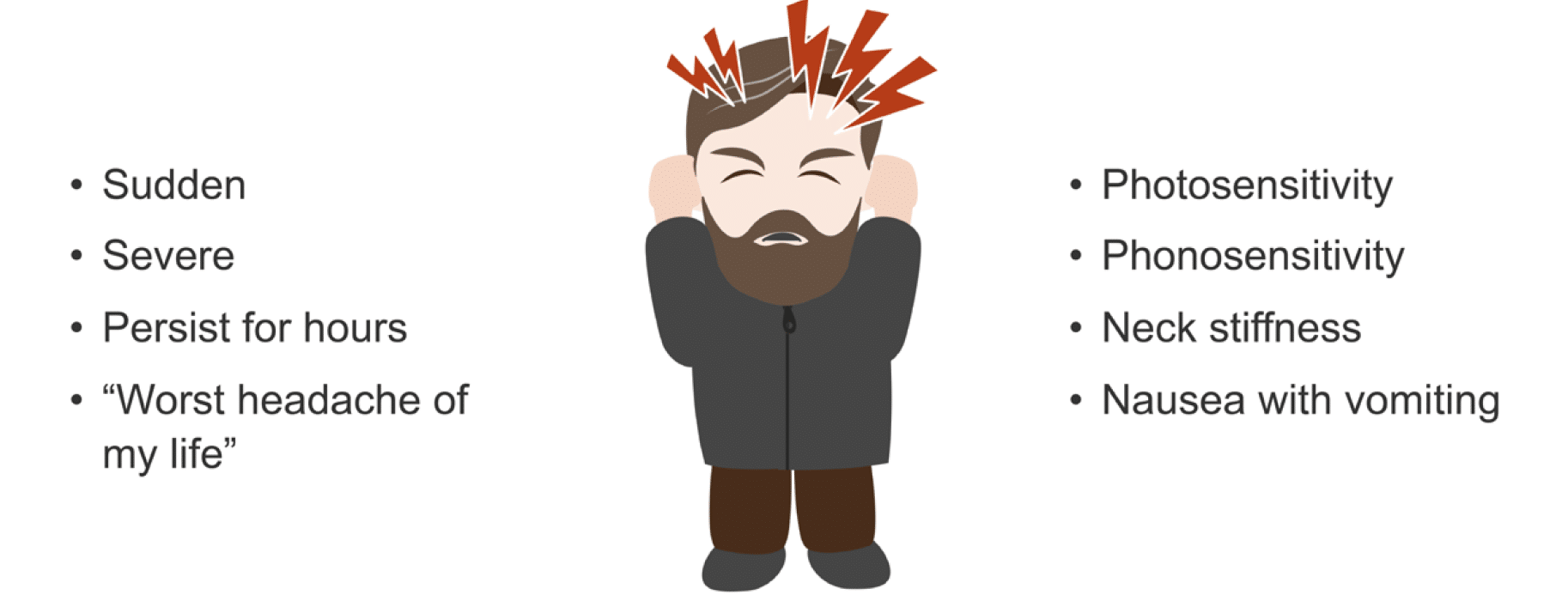

.png)